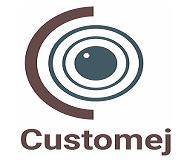
Tree trimming is not just about maintaining the visual beauty of landscape; it’s a crucial practice for your trees’ health and property security. Proper tree trimming can help prevent damage during storms, encourage fruit production, and eliminate diseased branches.
This blog post will discuss six ways to ensure that your tree trimming efforts are safe and successful.
Techniques for Different Tree Species
Different tree species have varying requirements for trimming. For example, flowering trees should be pruned immediately after they bear flowers to not cut off next year’s buds. Evergreens can be pruned at almost any time of the year and require only a minimum tree removal of live branches.
By knowing your particular tree species or by consulting with an expert, you can understand how to prune it best.
Tools and Equipment Required During Tree Trimming
It is important to use appropriate tools both for safety perseverance as well as to enable you get rid of unhealthy branches. Essential tools for tree trimming include:
- Pruning shears for small branches
- Loppers for medium branches
- A pruning saw or chainsaw for larger branches
- Safety equipment such as gloves, goggles, and a hard hat
Ensure your tools are clean and sharp to make clean cuts that the tree can heal from more efficiently.
Safety Measures for DIY and Professionals
Whether you are personally working on a tree or hiring professionals for tree trimming doesn’t really matter; what matters is safety. Any do-it-yourself trimmers should avoid going up trees carrying tools and never work on those near electricity lines.
Licensed, insured professional tree trimmers who have a track record in safety and reliability should be called. It is important that when pruning takes place, there are no people around or assets that might get damaged with falling branches, regardless of who does it.
Environmental Considerations
Tree pruning also entails environmental considerations. Overpruning may put extreme pressure on the tree and make it highly susceptible to pests and diseases. While, some cases call for the disease-infected trees, which can endanger others plants in the vicinity, to be removed as an environmental measure.
When you are not sure of what should be done, take note of both trimming and eliminating factors of ecological consequence of pruning, or ask an arborist or a tree inspector.
Knowing Tree Anatomy for Proper Trimming
Before you make your first cut, you need to have an understanding of the tree anatomy. Having this knowledge of which branches to remove and which ones to keep could mean all the difference in whether or not the tree will be healthy and grow well.
For example, never cut off the branch collar (the swelled area on the branch where it meets with the trunk) since it contains vital tissues that facilitate healing for trees.
Trimming just outside the branch collar will ensure the tree can properly seal the wound, preventing disease and decay.
Choosing Tree Care Professionals
When choosing a professional service for tree care and maintenance, look for companies with certified arborists.
Armed with ample knowledge about trees’ health; they can give advice on how to maintain trees well besides knowing safety precautions when removing overgrown branches or cutting them back.



